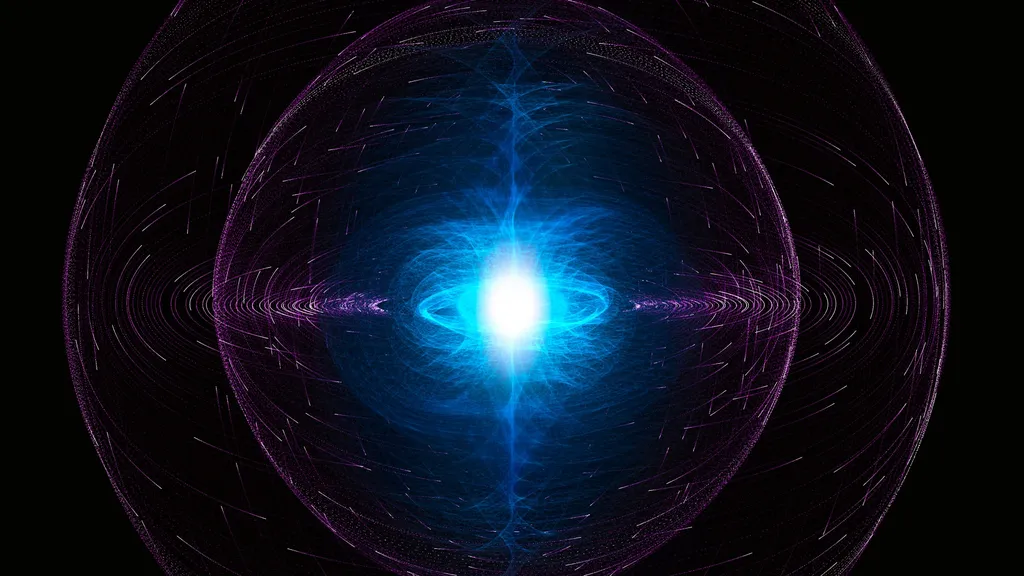In the realm of astrophysics and energy research, a team of scientists from the Universidade de São Paulo, Brazil, has delved into the rotational properties of a hypothetical type of star known as strange quark stars. The researchers, Adamu Issifu, Andreas Konstantinou, Franciele M. da Silva, and Tobias Frederico, have explored how these stars behave under different rotational conditions using two distinct models of quark matter.
Strange quark stars are theoretical objects composed of strange quark matter, a state of matter that is denser than the nuclear matter found in ordinary stars. The team investigated two representative quark matter equations of state (EOS): the vector MIT bag model and the density-dependent quark mass (DDQM) model. By performing general-relativistic calculations of uniformly rotating sequences, they analyzed various properties such as mass-radius relations, moments of inertia, quadrupole moments, surface redshifts, Keplerian frequencies, and energy components.
The study revealed that rotation amplifies the intrinsic differences between the two models. The MIT model supports more massive stars, with a maximum mass greater than 3.3 times the mass of the Sun, and these stars have larger moments of inertia and greater resistance to deformation. In contrast, the DDQM model produces stars with larger radii but lower masses, limited by mass-shedding at lower frequencies.
One of the central results of this work is the full decomposition of the stellar energy budget in rotating strange stars, separating gravitational, internal, rotational, and binding energy contributions. This detailed analysis provides a comprehensive understanding of the energy dynamics within these exotic objects.
The researchers suggest that combined measurements of mass, radius, and frequency can help distinguish between the different EOS models. Massive, rapidly rotating pulsars would favor MIT-like EOS, while larger radii in canonical stars would point to a DDQM-like model. These rotational observables are expected to be tightly constrained by future observations from the Neutron Star Interior Composition Explorer (NICER) and next-generation gravitational-wave detectors.
The practical applications for the energy sector are not immediate, as strange quark stars are purely theoretical objects. However, understanding the fundamental properties of matter under extreme conditions can have broader implications for energy research, particularly in the development of advanced materials and technologies that can withstand and utilize extreme environments.
This research was published in the journal Physical Review D, a peer-reviewed publication that covers topics in particle physics, field theory, gravitation, and cosmology. The detailed study provides a significant step forward in our understanding of the rotational properties of strange quark stars and the underlying physics of quark matter.
This article is based on research available at arXiv.

